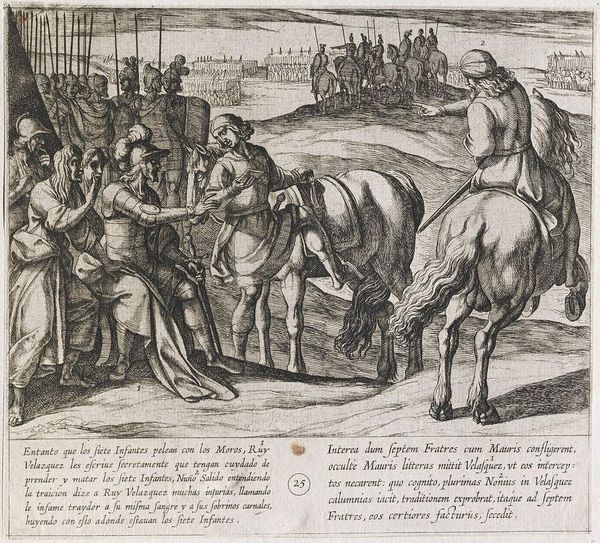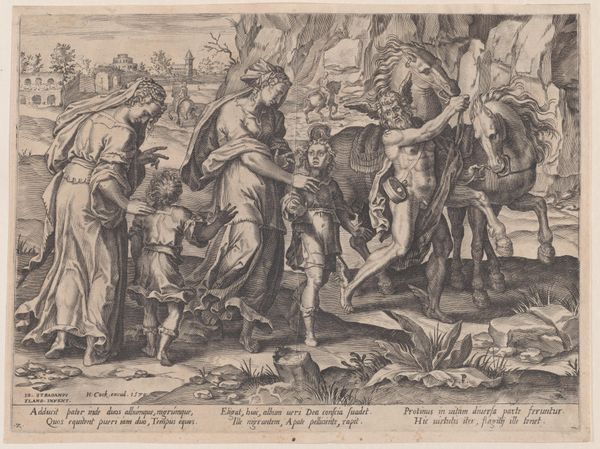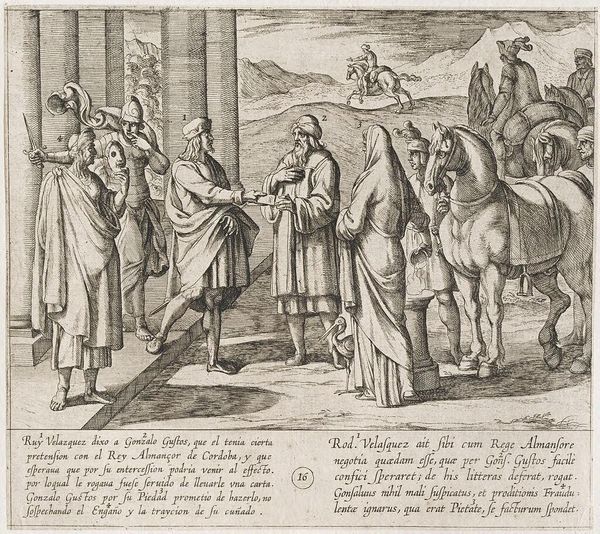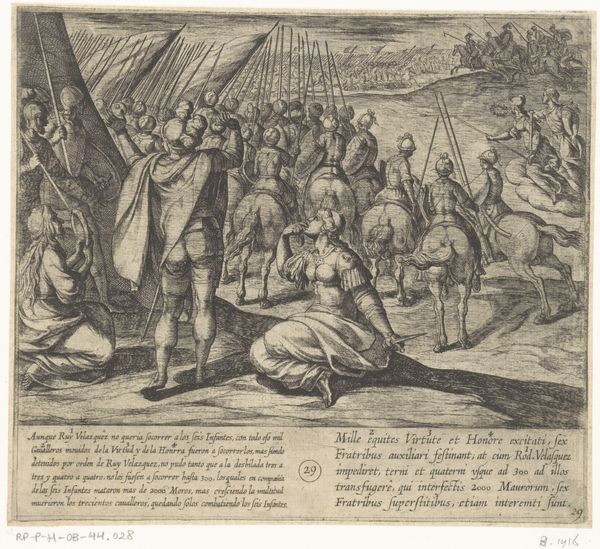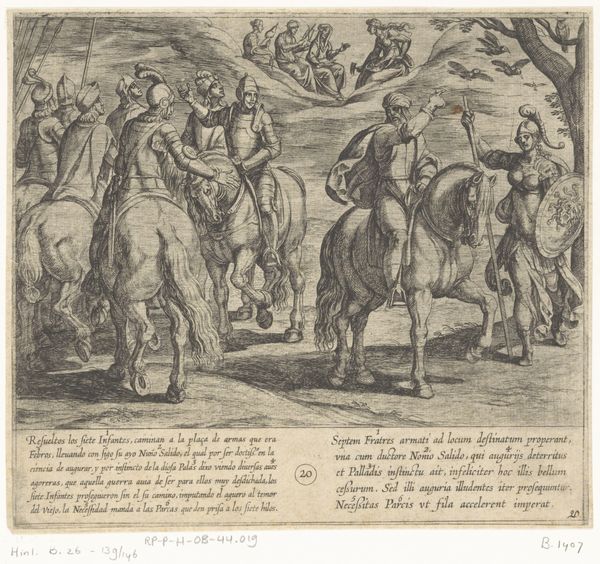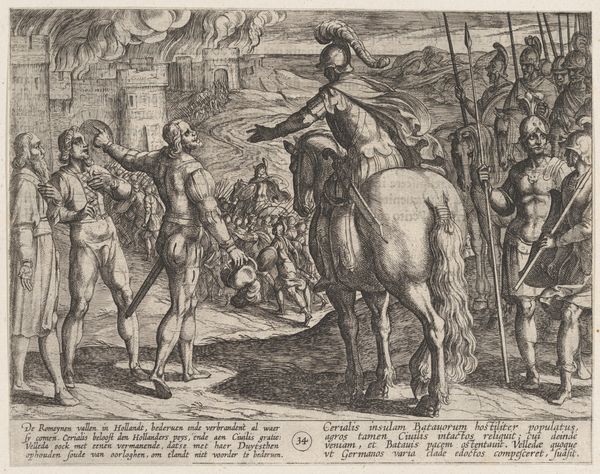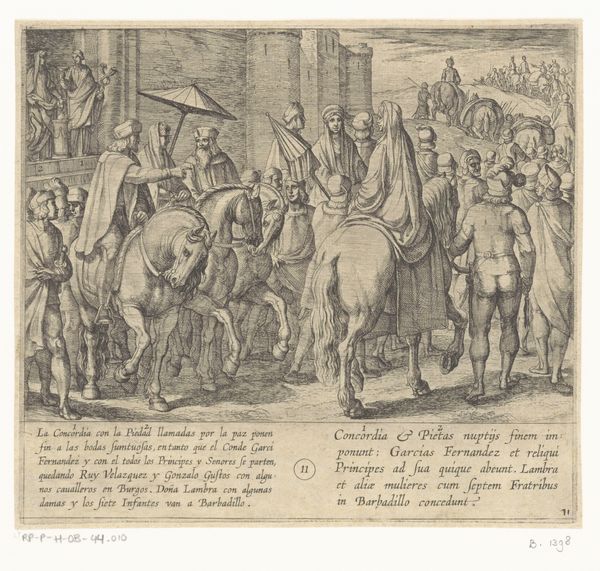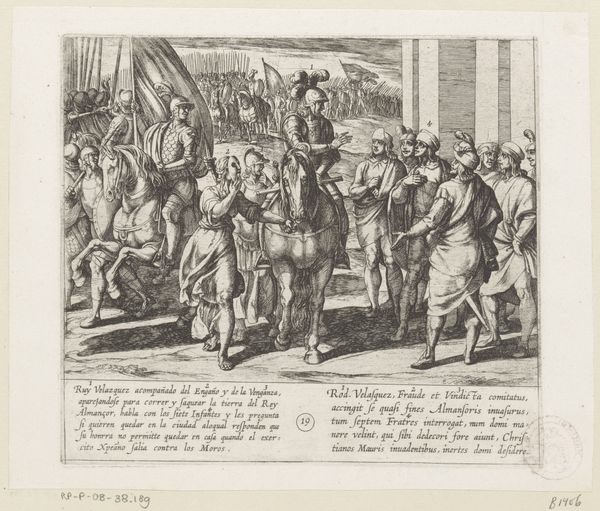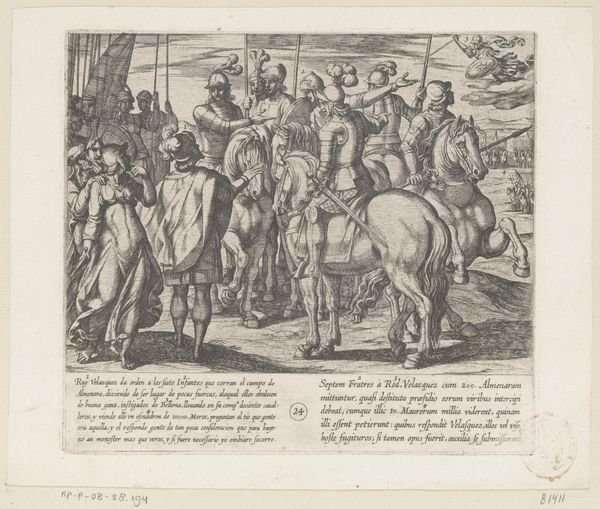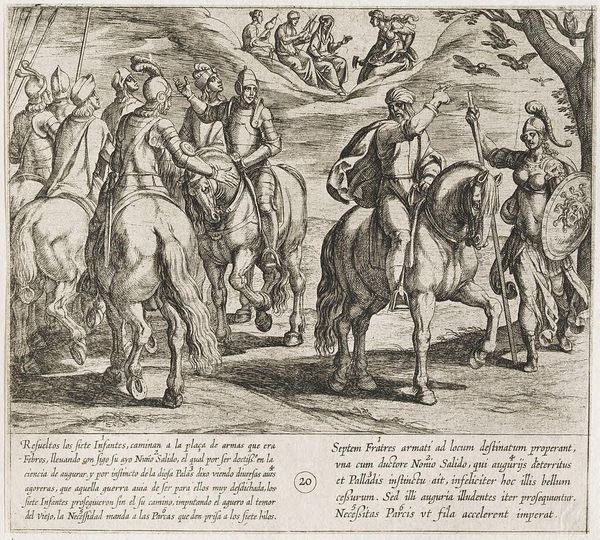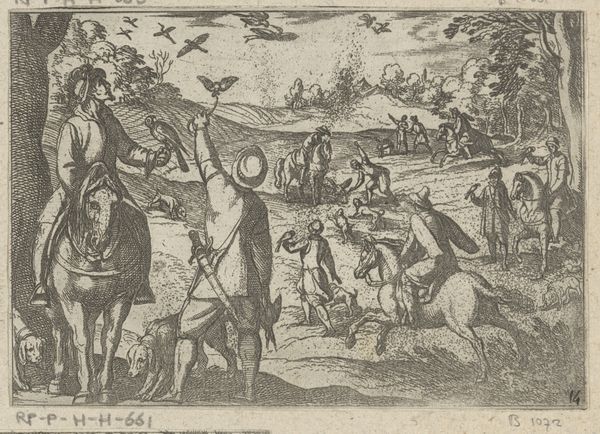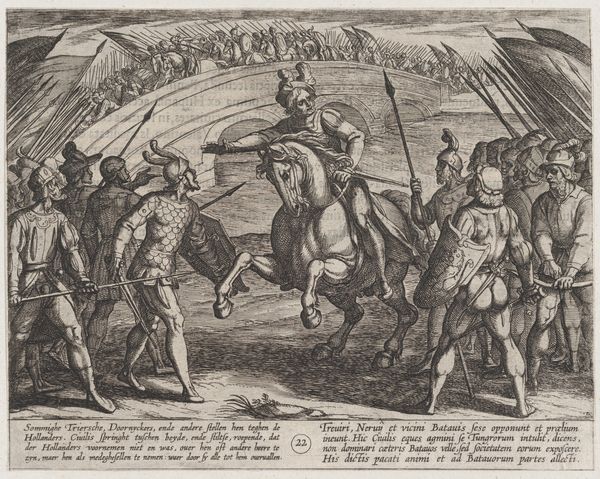
Nuño Salido hoort van het verraad van Ruy Velazquez en gaat de zonen van Lara waarschuwen 1612
0:00
0:00
antoniotempesta
Rijksmuseum
print, engraving
#
baroque
# print
#
figuration
#
line
#
history-painting
#
engraving
Dimensions: height 185 mm, width 206 mm
Copyright: Rijks Museum: Open Domain
Curator: This is an engraving by Antonio Tempesta, created in 1612. It's titled "Nuño Salido hears of the treason of Ruy Velazquez and goes to warn the sons of Lara." You can see it here at the Rijksmuseum. Editor: My first impression is of a busy scene, a tightly packed narrative unfolding in shades of grey. There’s a distinct lack of grandeur, even though it's dealing with what appears to be a dramatic historical event. Curator: Absolutely. Tempesta was a master of detail, and you see that here in the intricate lines defining each figure and horse. The print medium itself, specifically engraving, lends itself to the dissemination of stories, making them accessible beyond the elite. Consider it an early form of visual journalism. Editor: And that's key, isn't it? It's not just about the finished product, but the labor involved: the tools, the expertise needed to create such fine lines, the plates etched to allow for reproducibility. These are not merely decorative gestures but rather a method of storytelling accessible through materials and production. Curator: True. And consider the historical context: The story illustrates betrayal and loyalty—major themes. Notice how Nuno Salido's figure on horseback urgently gestures away. He carries symbolic weight as a moral compass in the face of deception. This tale reflects enduring human concerns about power and trustworthiness. Editor: Yes, the horse. See how its materiality contrasts to others – this animal isn't some symbol; it's muscle, bone, and sinew rendered meticulously, implicating in its fatigue. It also suggests transportation, not in a glorified way, but as the physical means to carry the story forward and enable this moral duty. Curator: It shows that the symbolic and the tangible always intersect. We get both a history lesson, and an example of craftsmanship defining an era, thanks to its narrative and material accessibility. Editor: And perhaps that tension between grand narratives and tangible forms makes this artwork still relevant – highlighting both the drama and its construction.
Comments
No comments
Be the first to comment and join the conversation on the ultimate creative platform.
